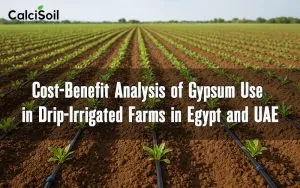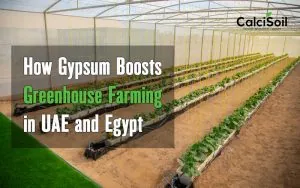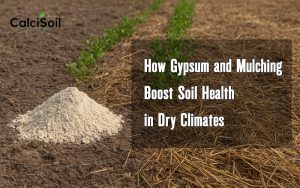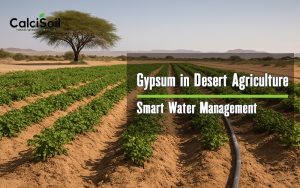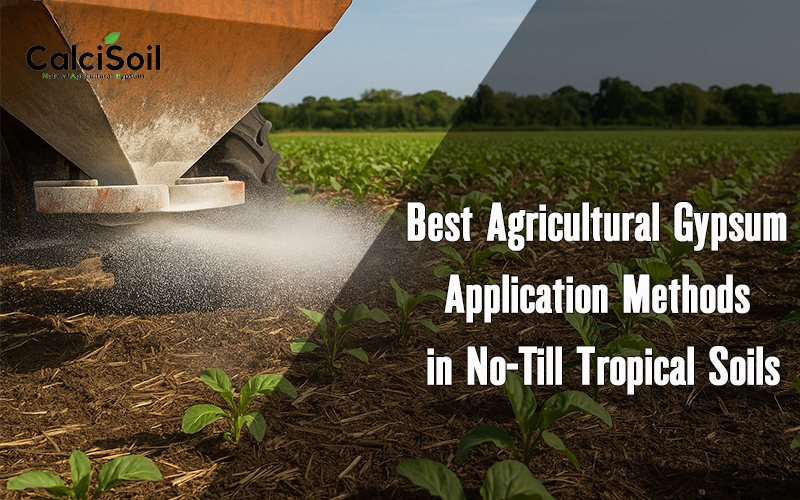
Understanding the Role of Agricultural Gypsum in No-Till Farming
In tropical agriculture, soil health is one of the biggest challenges for farmers. High temperatures, heavy rainfall, and naturally weathered soils often lead to nutrient loss, increased acidity, and poor structure. For farmers using no-till systems, these challenges are amplified, as there is no traditional tillage to mix amendments.
In this context, agricultural gypsum stands out as an effective soil conditioner that improves soil structure, enhances nutrient availability, and protects water quality. However, knowing the best gypsum fertilizer application methods for no-till tropical soils is the key to unlocking its full benefits.
Assessing Soil Needs Before Applying Gypsum Fertilizer
Agricultural gypsum, primarily composed of calcium sulfate dihydrate, offers a unique combination of calcium and sulfur that benefits both plants and soil. In tropical no-till systems, where crop residues protect the surface and limit mechanical mixing, gypsum’s high solubility makes it ideal for surface application. Unlike lime, which reacts slowly, gypsum can move into deeper soil layers with rainfall, supplying calcium to subsoils where root growth is often restricted by acidity or compaction.
Surface Spreading: The Ideal Method for No-Till Tropical Soils
The first step in optimizing gypsum use is to accurately assess soil requirements. In tropical no-till soils, subsoil acidity and aluminum toxicity are common problems that limit root depth. A soil test can reveal calcium deficiencies or high aluminum levels. If these issues are present, gypsum fertilizer can help displace exchangeable aluminum, improve root penetration, and increase water and nutrient uptake. In humid regions, yield improvements are often seen in the first cropping season after application.
Timing Gypsum Application for Maximum Effect in the Tropics
In no-till agriculture, surface spreading is the most common and effective method. In tropical climates with frequent rainfall, the calcium and sulfur ions in agricultural gypsum can naturally move through the soil profile without mechanical incorporation. This is important in no-till systems, where disturbing the soil can harm microbial communities, reduce organic matter, and compromise erosion control.
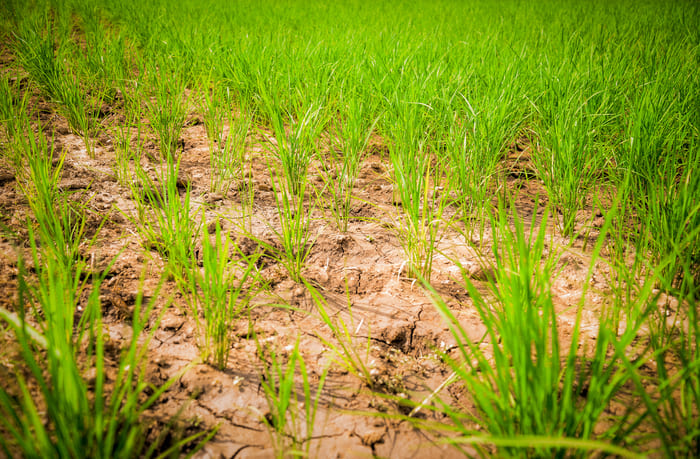
How Gypsum Fertilizer Improves Soil Structure and Water Infiltration
Timing is critical. In many cases, applying agricultural gypsum at the start of the rainy season ensures it dissolves and moves into the soil with peak water infiltration. In cover crop systems, gypsum can be spread over existing vegetation, allowing rainfall to transport dissolved nutrients into the soil without damaging plant cover. Some farmers also combine gypsum with organic fertilizers to improve nutrient cycling and biological activity.
Determining the Right Application Rate for Tropical No-Till Systems
In tropical soils, especially weathered clay soils, gypsum’s role goes beyond supplying nutrients. It improves soil aggregation, reduces crusting, and enhances water infiltration rates. These benefits are crucial for no-till systems, where waterlogging and runoff can be significant problems. Better water movement also reduces phosphorus loss, protecting rivers and lakes from eutrophication.
Choosing High-Quality Agricultural Gypsum Products
Application rates in tropical no-till systems typically range from 1 to 4 tons per hectare, depending on soil test results and crop needs. Balancing the rate with cost is important to avoid excessive application, which can lead to the loss of other nutrients such as magnesium and potassium. Reapplication may be necessary every few years.
Environmental and Community Benefits of Gypsum Application
Access to high-quality gypsum fertilizer is essential, as products vary in purity and performance. Opt for high-purity agricultural gypsum free from contaminants. In regions where industrial gypsum is available, ensure it meets agricultural standards and is free from harmful residues.
Conclusion: Building Resilient No-Till Tropical Farms with Gypsum
The benefits of agricultural gypsum extend beyond the farm. It improves drought resilience, reduces erosion risk, and preserves water quality. Ultimately, agricultural gypsum is a strategic tool for improving productivity in tropical no-till systems while protecting the environment.

